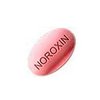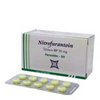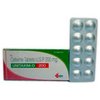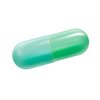INDICATIONS
Cefixime is used for treating infections caused by certain bacteria. Cefixime is a cephalosporin antibiotic. It works by killing sensitive bacteria.
INSTRUCTIONSUse Cefixime as directed by your doctor.
- Take Cefixime by mouth with or without food. If stomach upset occurs, take with food to reduce stomach irritation.
- To clear up your infection completely, continue using Cefixime for the full course of treatment even if you feel better in a few days.
- If you miss a dose of Cefixime, take it as soon as possible. If it is almost time for your next dose, skip the missed dose and go back to your regular dosing schedule. Do not take 2 doses at once.
Ask your health care provider any questions you may have about how to use Cefixime.
STORAGE
Store Cefixime at room temperature, between 68 and 77 degrees F (20 and 25 degrees C). Store away from heat, moisture, and light. Do not store in the bathroom. Keep Cefixime out of the reach of children and away from pets.
Do NOT use Cefixime if:
- you are allergic to any ingredient in Cefixime or to other cephalosporins (eg, cephalexin)
- you will be having a live typhoid vaccine.
Contact your doctor or health care provider right away if any of these apply to you.
Some medical conditions may interact with Cefixime. Tell your doctor or pharmacist if you have any medical conditions, especially if any of the following apply to you:
- if you are pregnant, planning to become pregnant, or are breast-feeding
- if you are taking any prescription or nonprescription medicine, herbal preparation, or dietary supplement
- if you have allergies to medicines, foods, or other substances
- if you have had a severe allergic reaction (eg, severe rash, hives, difficulty breathing, dizziness) to a penicillin (eg, amoxicillin) or beta-lactam antibiotic (eg, imipenem)
- if you have diarrhea, stomach or bowel problems (eg, inflammation), bleeding or blood clotting problems, liver problems, or poor nutrition
- if you have a history of kidney problems or you are on dialysis treatment.
Some medicines may interact with Cefixime. Tell your doctor or pharmacist if you have any medical conditions, especially if any of the following apply to you:
- Anticoagulants (eg, warfarin) or carbamazepine because the risk of their side effects may be increased by Cefixime
- Live typhoid vaccines because their effectiveness may be decreased by Cefixime.
Ask your health care provider if Cefixime may interact with other medicines that you take. Check with your health care provider before you start, stop, or change the dose of any medicine.
Important safety information:
- Cefixime may cause dizziness. This effect may be worse if you take it with alcohol or certain medicines. Use Cefixime with caution. Do not drive or perform other possible unsafe tasks until you know how you react to it.
- Do not change dose forms (eg, tablets, suspension) of Cefixime without talking with your doctor.
- Mild diarrhea is common with antibiotic use. However, a more serious form of diarrhea (pseudomembranous colitis) may rarely occur. This may develop while you use the antibiotic or within several months after you stop using it. Contact your doctor right away if stomach pain or cramps, severe diarrhea, or bloody stools occur. Do not treat diarrhea without first checking with your doctor.
- Cefixime only works against bacteria; it does not treat viral infections (eg, the common cold).
- Be sure to use Cefixime for the full course of treatment. If you do not, the medicine may not clear up your infection completely. The bacteria could also become less sensitive to this or other medicines. This could make the infection harder to treat in the future.
- Long-term or repeated use of Cefixime may cause a second infection. Tell your doctor if signs of a second infection occur. Your medicine may need to be changed to treat this.
- Cefixime may reduce the number of clot-forming cells (platelets) in your blood. Avoid activities that may cause bruising or injury. Tell your doctor if you have unusual bruising or bleeding. Tell your doctor if you have dark, tarry, or bloody stools.
- Do not receive a live typhoid vaccine while you are taking Cefixime. It may not work as well. Talk with your doctor if you are scheduled to receive a live typhoid vaccine.
- Diabetes patients - Cefixime may cause the results of some tests for urine glucose or urine ketones to be wrong. Ask your doctor before you change your diet or the dose of your diabetes medicine.
- Cefixime may interfere with certain lab tests. Be sure your doctor and lab personnel know you are using Cefixime.
- Cefixime should be used with extreme caution in children younger 6 months; safety and effectiveness in these children have not been confirmed.
- Pregnancy and breast-feeding: If you become pregnant, contact your doctor. You will need to discuss the benefits and risks of using Cefixime while you are pregnant. It is not known if Cefixime is found in breast milk. If you are or will be breast-feeding while you use Cefixime, check with your doctor or pharmacist. Discuss any possible risks to your baby.
All medicines may cause side effects, but many people have no, or minor, side effects.
Check with your doctor if any of these most common side effects persist or become bothersome:
Diarrhea; gas; loose stools; nausea; stomach pain or upset.
Seek medical attention right away if any of these severe side effects occur:
Severe allergic reactions (rash; hives; itching; difficulty breathing; tightness in the chest; swelling of the mouth, face, lips, or tongue; unusual hoarseness); bloody stools; decreased urination; fever, chills, or sore throat; red, swollen, blistered, or peeling skin; seizures; severe diarrhea; severe nausea or vomiting; severe stomach pain or cramping; unusual bruising or bleeding; vaginal discharge or itching; white spots in the mouth; yellowing of the skin or eyes.
This is not a complete list of all side effects that may occur. If you have questions about side effects, contact your health care provider.
 NoroxinNoroxin is used to treat bacterial infections of the prostate and urinary tract. Noroxin also treats gonorrhea.as low as $0.43
NoroxinNoroxin is used to treat bacterial infections of the prostate and urinary tract. Noroxin also treats gonorrhea.as low as $0.43 NitrofurantoinNitrofurantoin is used for treating and preventing urinary tract infections caused by certain bacteria.as low as $0.48
NitrofurantoinNitrofurantoin is used for treating and preventing urinary tract infections caused by certain bacteria.as low as $0.48 CefiximeCefixime is used for treating infections caused by certain bacteria.as low as $3.17
CefiximeCefixime is used for treating infections caused by certain bacteria.as low as $3.17 VantinVantin is used for treating mild to moderate infections caused by certain bacteria.as low as $1.86
VantinVantin is used for treating mild to moderate infections caused by certain bacteria.as low as $1.86 ZithromaxZithromax is used to treat many different types of infections caused by bacteria, such as respiratory infections, skin infections, ear infections, and sexually transmitted diseases. In children, it is used to treat middle ear infection, pneumonia, tonsillitis, and strep throat.as low as $0.46
ZithromaxZithromax is used to treat many different types of infections caused by bacteria, such as respiratory infections, skin infections, ear infections, and sexually transmitted diseases. In children, it is used to treat middle ear infection, pneumonia, tonsillitis, and strep throat.as low as $0.46 CleocinCleocin is used for treating serious infections caused by certain bacteria.as low as $2.29
CleocinCleocin is used for treating serious infections caused by certain bacteria.as low as $2.29